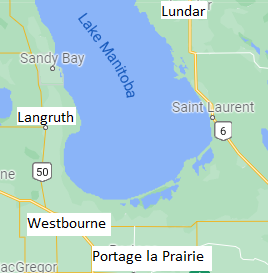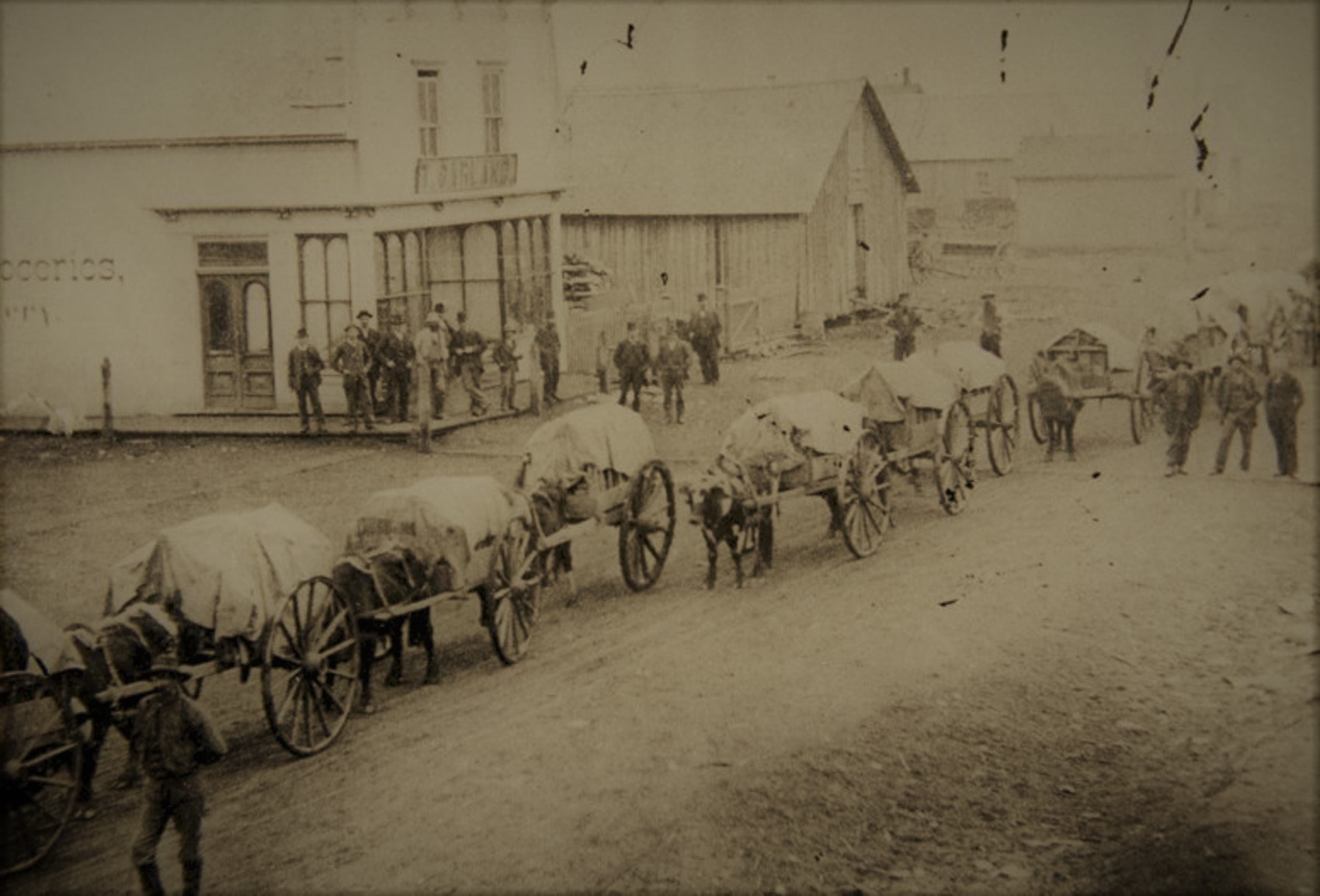 Portage la Prairie is about 85 km (53 miles) west of Winnipeg and is on Highway #1, the longest highway in the world, which stretches across Canada from Halifax, Nova Scotia to Vancouver on the Pacific Ocean. Various indigenous tribes lived there for centuries, e.g., Cree and Dakota. French explorers traveled through this area of Manitoba in the mid-18th century. They were Pierre-Esprit Raddisson and Médard des Groseilliers, both of whom were instrumental in founding the mighty Hudson’s Bay Company. It is likely that they were involved in the naming of the place which is derived from the French word portage which means to carry small boats between water bodies and in this case across the plains, “the prairie”. The natives carried their boats between the Assiniboine River and Lake Manitoba, the route was 25 km (15.5 miles) long. The fur trade reached the west of the plains around 1740, and soon after, a fortress, or rather a merchants’ trading post, was built north of the Assiniboine River. It was also the residence of French explorers who were at the forefront of Western exploration. English missionaries came to the area around 1850, land was bought by the emigrants, a church was built and a school. Settlement by the river began, the fertile plain led settlers to the area, and by 1860, 60 settlers had built their houses, and as a result, merchants opened their shops.
Portage la Prairie is about 85 km (53 miles) west of Winnipeg and is on Highway #1, the longest highway in the world, which stretches across Canada from Halifax, Nova Scotia to Vancouver on the Pacific Ocean. Various indigenous tribes lived there for centuries, e.g., Cree and Dakota. French explorers traveled through this area of Manitoba in the mid-18th century. They were Pierre-Esprit Raddisson and Médard des Groseilliers, both of whom were instrumental in founding the mighty Hudson’s Bay Company. It is likely that they were involved in the naming of the place which is derived from the French word portage which means to carry small boats between water bodies and in this case across the plains, “the prairie”. The natives carried their boats between the Assiniboine River and Lake Manitoba, the route was 25 km (15.5 miles) long. The fur trade reached the west of the plains around 1740, and soon after, a fortress, or rather a merchants’ trading post, was built north of the Assiniboine River. It was also the residence of French explorers who were at the forefront of Western exploration. English missionaries came to the area around 1850, land was bought by the emigrants, a church was built and a school. Settlement by the river began, the fertile plain led settlers to the area, and by 1860, 60 settlers had built their houses, and as a result, merchants opened their shops.
Icelanders and Portage la Prairie
After 1880, many Icelanders passed through Portage la Prairie, some staying in the town for a while and then continuing their journey to their destination in the west of the state and later west to Saskatchewan and Alberta. When the settlement of Big Point began, most people traveled from Winnipeg, west to Portage la Prairie, through Westbourne, and north to the headland where Langruth stands today. Icelandic fishing on Lake Manitoba was extensive, summer, winter, spring and autumn. In the winter, people fished through the ice, froze the catch on the lake, and when it came to transporting it to settlements, people traveled along the icy water. They landed north of Westbourne, where merchants came and bought the fish, transported it to Portage la Prairie, and from there by train to Winnipeg. Vigfús Þorsteinsson and his wife Guðríður Guðmundsdóttir came west with their children to Winnipeg, Manitoba in 1883. Their search for a future home was quite typical, they lived in the city for a while, settled in Saskatchewan, but moved from there to Portage la Prairie in 1894. That was the route to Big Point. Sigríður Friðriksdóttir was born on May 23, 1851 in Strandasýsla. She sailed west to Winnipeg, Manitoba in 1888 with Marís and Jónína. They first went to the Thingvalla Settlement in Saskatchewan but from there moved to Portage la Prairie in Manitoba. From there they moved to Big Point in 1902. Two years later, Marís took land and started farming. Sigríður lived with him until her death. Portage La Prairie was thus a kind of resting place for Icelandic immigrants, few would have settled there, but around and after the turn of the century, it was quite common for people to go there when their health began to decline. There, health care was better than was customary in rural areas. And some ended their journey there e.g., Sigríður Björnsdóttir from Skagafjörður who died there near her daughter, Dóra Þorbjörg in 1948.

This 1880 photo shows a wagon train passing through the village, possibly with fur traders coming from the west on their way to Winnipeg. Photo Prairie Towns
